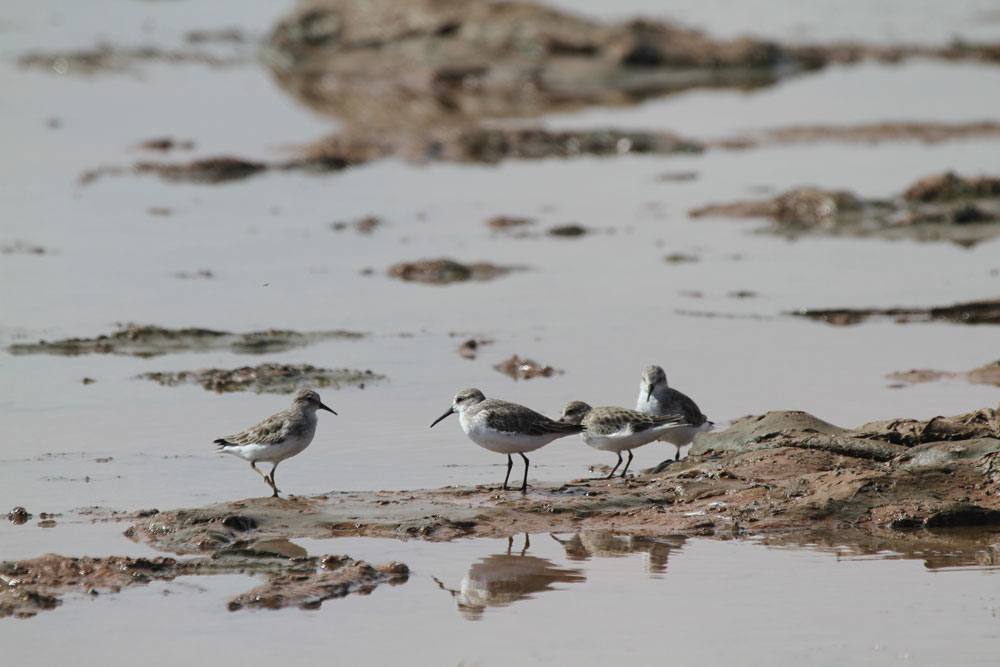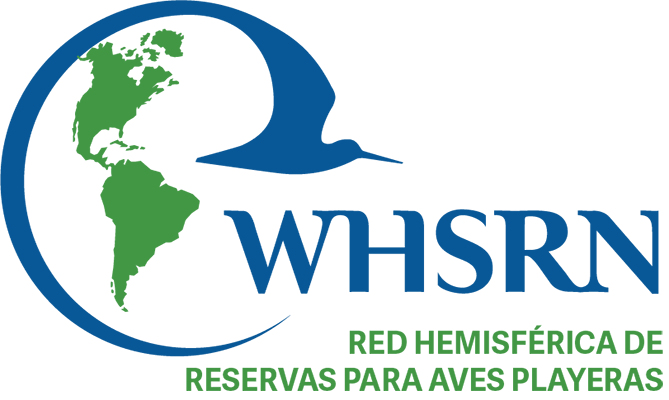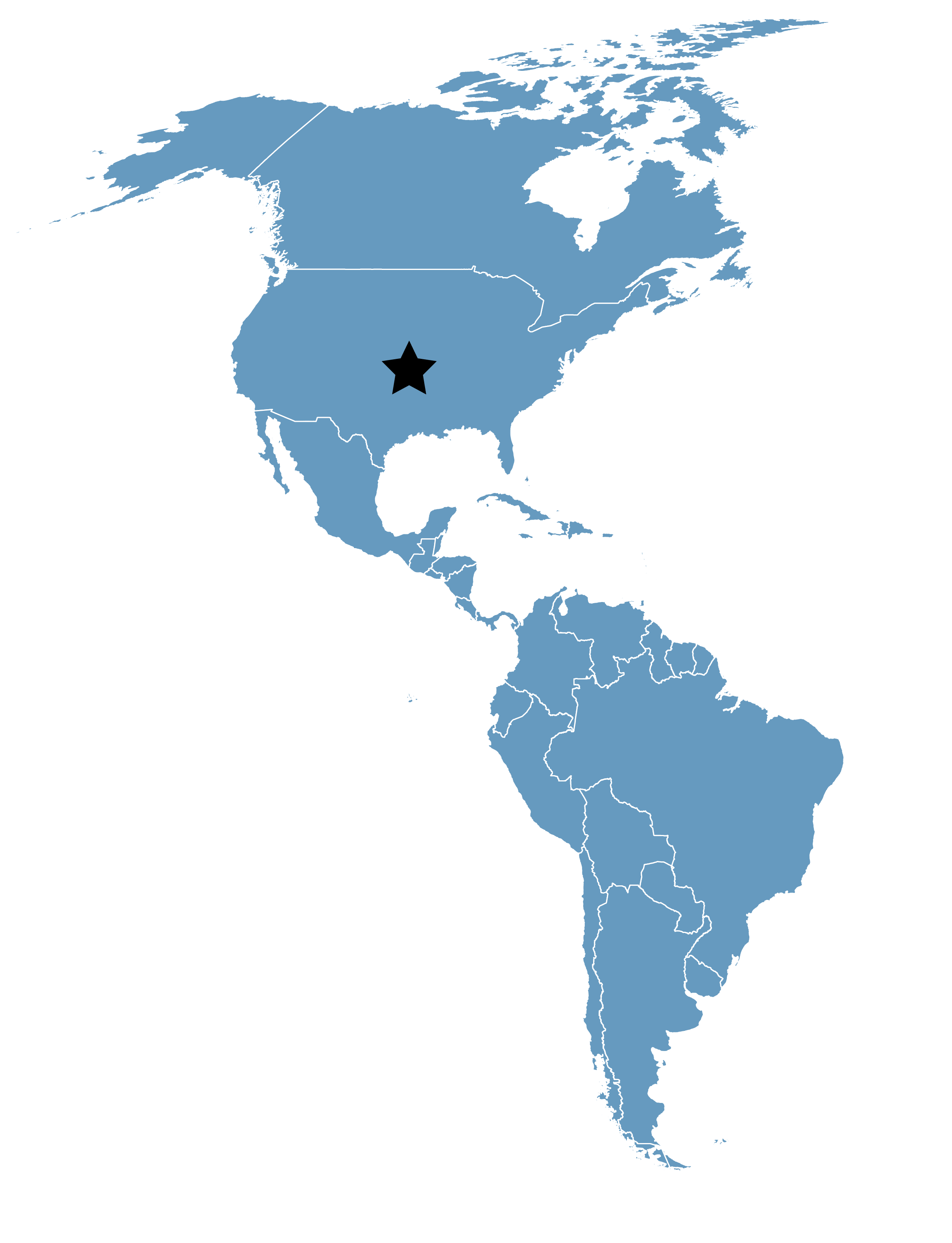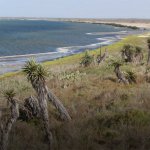Salt Plains NWR
Location
Oklahoma, United States
Category
International
Basis for Designation
Supports approximately 20% of the North American breeding population of Snowy Plovers (Charadrius nivosus nivosus)
Size
13,030 hectares (32,197 acres)
Date Designated
February 1994
Site Owner
U.S. Fish and Wildlife Service
Site Partners
Cherokee Mainstreet
Friends of Salt Plains National Wildlife Refuge
Great Salt Plains State Park
Oklahoma Department of Wildlife Conservation
Overview
Salt Plains National Wildlife Refuge (NWR) has been described as the largest expanse of salt flats east of the Rockies. The salt flats encompass approximately 32,000 acres and are bordered to the east by the Great Salt Plains Reservoir, ~8,700 acres. The salt flats are also traversed by west branch of the Salt Fork of the Arkansas River, Cottonwood Creek, Clay Creek, and Spring Creek. This provides for numerous miles of open shoreline habitat for shorebirds and other waterbird species. The refuge also maintains wetlands for migrating shorebirds, waterbirds and waterfowl.
The site is used by shorebirds primarily during migration for feeding and roosting. Peak shorebird migration occurs mainly from March to May and from July through October. Skagen et al. (1999) found Salt Plains NWR to hold high numbers of Semipalmated Sandpiper, Western Sandpiper, and White-rumped Sandpiper during spring migration, Greater Yellowlegs, Willet, Sanderling, Least Sandpiper, and Stilt Sandpiper during fall migration, and Snowy Plover, Spotted Sandpiper, and Baird’s Sandpiper during both fall and spring. Thomas et al. (2012) estimates that Salt Plains NWR supports >20% of the continental breeding population of Snowy Plovers.
Ecology and Conservation
The salt flats are the remnants of a prehistoric sea. The shallow water table seeps through the sandy soils to the surface and as it evaporates the salt is left behind. The salt flats provide nesting habitat for endangered least terns, snowy plovers, and American avocets. The salt flats provide shallow pools of water that produce thousands of invertebrates, which are important food sources for nesting snowy plovers and other shorebirds. The salt flats also provide large expanses of algae mats producing large amounts of biofilm for migrating shorebirds. The least terns feed along the rivers that flow through the salt flats. These nesting birds dig out a small cup in the sand for a nest and their eggs are camouflaged with the sand to prevent predation.
Invasive plant species are a major threat to the persistence of the salt flats and available migration and nesting habitat. Koenen et al. (1996) has estimated that approximately 12 hectares of salt flats are lost per year due to invasion of saltcedar. The refuge has begun large scale control efforts to protect the salt flats and halt any further loss.
Shorebirds also use the refuge’s managed wetlands during migration. The refuge actively manages wetland water levels to provide moist mud flats and shallow water habitat during peak migration periods.

Least Sandpiper (left and second from right) and Western Sandpiper (middle and right) at Salt Plains NWR. Photo: Glen Hensley.
Ecotourism
The salt flats are closed to the public to provide refuge and an inviolate sanctuary to migrating and nesting birds year-round. However, the following are areas open to the public to enjoy wildlife dependent recreation on the refuge and view shorebirds along with other migratory bird species.
Eagle Roost and Hoot Owl Nature Trails are located near the refuge headquarters and provide about 1.5 miles of hiking trails. One popular destination along the trails is the wildlife observation tower on Sand Creek Bay. This tower overlooks the shallow bay (1-6 inches) that is heavily utilized by migrating shorebirds, waterbirds, and waterfowl.
Sandpiper Trail, just south of highway 11, includes a parking area, kiosk, and a hiking trail leading to a shorebird observation tower on the northern end of the salt flats. This is a good spot to view migrating shorebirds as they forage along tributaries spreading across the flats. During the nesting season one might view nesting endangered least terns and snowy plovers.
Harold F. Miller Auto Tour winds through the refuge’s managed wetlands. Shorebirds often use the wetlands as they are filled in the fall and drained in the spring. Waterfowl also use the managed wetlands from the fall through the spring. Most managed wetlands are dry during the summer months to promote wetland vegetation growth before they are refilled in the fall.
Great Salt Plains Reservoir is a shallow lake mostly within the refuge boundary. The portion within the refuge is open April 1st through October 15th. The western edge of the lake joins the salt flats, providing for shorebird and waterbird observation along the lake edge during migration. There is a 200 yard buffer along the salt flats shoreline to reduce disturbance to migrating birds.
Salt Plains Crystal Digging Area is a designated area on the salt flats where visitors can dig for selenite crystals. Salt Plains NWR is the only place in the world to find selenite crystals with an hour-glass inclusion. Snowy plovers have been documented using old dig site piles for nesting to alleviate nest loss from sheet flooding.
Resources
Most recent shorebird research includes:
- Heath, K. M. Ongoing. Population Connectivity, Population Trends and Breeding Behaviors of Snowy Plovers on the Southern Great Plains of Texas, New Mexico, and Oklahoma. MS Thesis. Texas Tech University, Lubbock, TX
- Ashbaugh, H. M., W. C. Conway, D. A. Haukos, D. P. Collins, C. E. Comer, and A. D. French. 2018. Evidence for exposure to selenium by breeding interior snowy plovers (Charadrius nivosus) in saline systems of the Southern Great Plains. Ecotoxicology.
- Duffie, L. E. 2017. Mercury Concentrations in Snowy Plovers and Sediments of Their Breeding Environments in the Southern Great Plains. MS Thesis. Stephen F. Austin University,
- Ashbaush, H. M. 2016. Environmental Availability and Potential Influences of Heavy Metals on Snowy Plovers in the Southern Great Plains of Texas, New Mexico, and Oklahoma. MS Thesis. Texas Tech University, Lubbock, TX.
- Thomas, S. M., J. E. Lyons, B. A. Andres, E. E. T-Smith, E. Palacios, J. F. Cavitt, A. Royle, S. D. Fellows, K. Maty, W. H. Howe, E. Mellink, S. Melvin, and T. Zimmerman. 2012. Population Size of Snowy Plovers Breeding in North America. Waterbirds. 35(1):1-14.
- Skagen, S. K., P. B. Sharpe, R. G. Waltermire, and M. B. Dillon. 1999. Biogeographical profiles of shorebird migration in midcontinental North America. Biological Science Report USGS/BRD/BSR—2000-2003. U.S. Government Printing Office, Denver, Colo. 167 pp.
- Schweitzer, S. H., and D. M. Leslie, Jr. 2000. Stage-specific Survival Rates of the Endangered Least Tern (Sterna antillarum) in Northwestern Oklahoma. Proceedings of Oklahoma Academy of Science. 80:53-60.
- Koenen, M. T., D. M. Leslie, Jr., and M. Gregory. 1996. Habitat Changes and Success of Artificial Nests on an Alkaline Flat. The Wilson Bulletin. 108:292-301.
Recent research from the Salt Plains Microbial Laboratory:
- Al Soudi, A. F., O. Farhat, F. Chen, B. C. Clark, and M. A. Schneegurt. 2016. Bacterial growth tolerance to concentrations of chlorate and perchlorate salts relevant to Mars. International Journal of Astrobiology doi: 10.1017/S14735504160000434.
- Fredsgaard, C., D. B. Moore, A. F. Al Soudi, J. D. Crisler, F. Chen, B. C. Clark, and M. A. Schneegurt. 2016. Relationships between sucretolerance and salinotolerance in bacteria from hypersaline environments and their implications for the exploration of Mars and the icy worlds. International Journal of Astrobiology 16:156-162.
- Evans, S., R. W. Hansen, H. M. Stone, and M. A. Schneegurt. 2013. Isolation and characterization of halotolerant soil fungi from the Great Salt Plains of Oklahoma (USA). Cryptogamie Mycologie 34:329-341.
- Schneegurt, M. A. 2013. Colorimetric microbial diversity analysis and halotolerance along a soil salinity gradient at the Great Salt Plains of Oklahoma. Research in Microbiology 164:83-89.
- Caton, I. R., and M. A. Schneegurt. 2012. Culture-independent analysis of the soil bacterial assemblage at the Great Salt Plains of Oklahoma. Journal of Basic Microbiology. 52(1):16-26.
- Crisler, J. D., T. M. Newville, F. Chen, B. C. Clark, and M. A. Schneegurt. 2012. Bacterial growth at the high concentrations of magnesium sulfate found in Martian soils. Astrobiology. 12:98-106.
- Buchheim, M. A., A. E. Kirkwood, J. A. Buchheim, B. Verghese, and W. J. Henley. 2010. Hypersaline soil supports a diverse community of Dunaliella (Chlorophyceae). Journal of Phycology. 46:1038-1047.
- Caton, T. M., I. R. Caton, L. R. Witte, and M. A. Schneegurt. 2009. Archaeal diversity at the Great Salt Plains of Oklahoma described by cultivation and molecular analyses. Microbial Ecology. 58:519-528.
- Litzner, B. R., T. M. Caton, and M. A. Schneegurt. 2006. Carbon substrate utilization, antibiotic sensitivity, and numerical taxonomy of bacterial isolates from the Great Salt Plains of Oklahoma. Archives of Microbiology. 185:286-296.
- Wilson, C., T. M. Caton, J. A. Buchheim, M. A. Buchheim, M. A. Schneegurt, and R. V. Miller. 2004. DNA-Repair potential of Halomonas spp. from the Salt Plains Microbial Observatory of Oklahoma. Microbial Ecology. 48:541-549.
- Caton, T. M., L. R. Witte, H. D. Ngyuen, J. A. Buchheim, M. A. Buchheim, and M. A. Schneegurt. 2004. Halotolerant aerobic heterotrophic bacteria from the Great Salt Plains of Oklahoma. Microbial Ecology. 48:449-462








